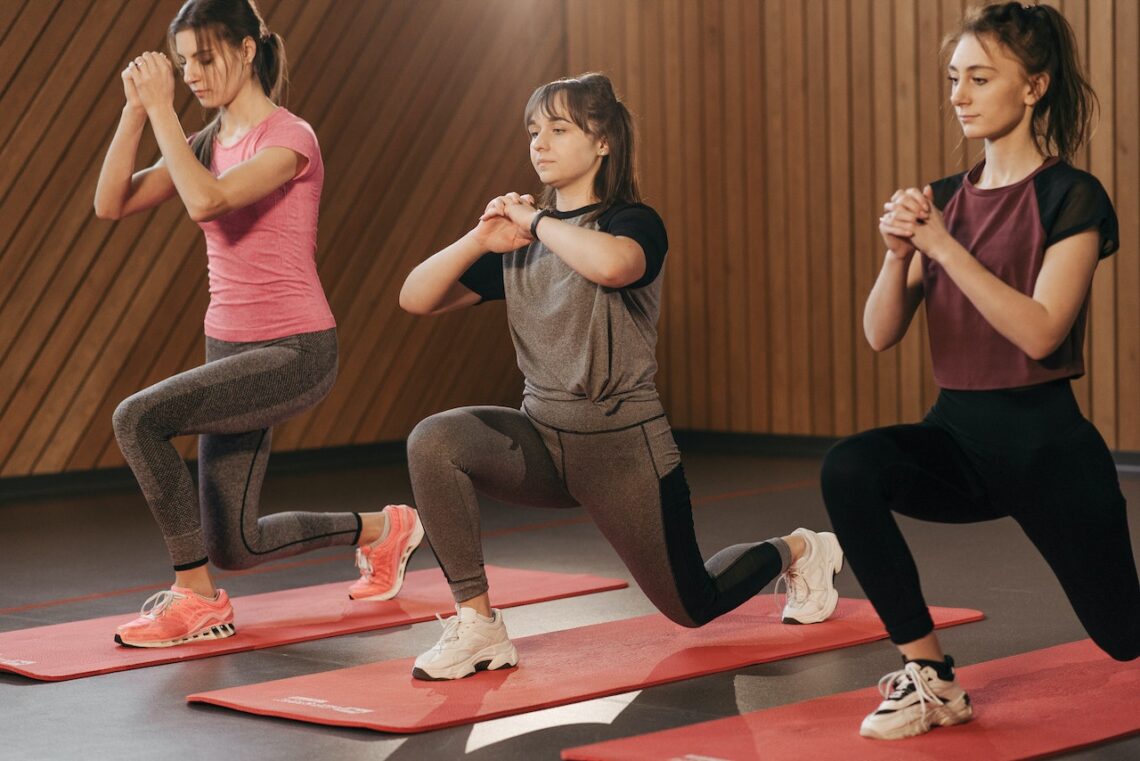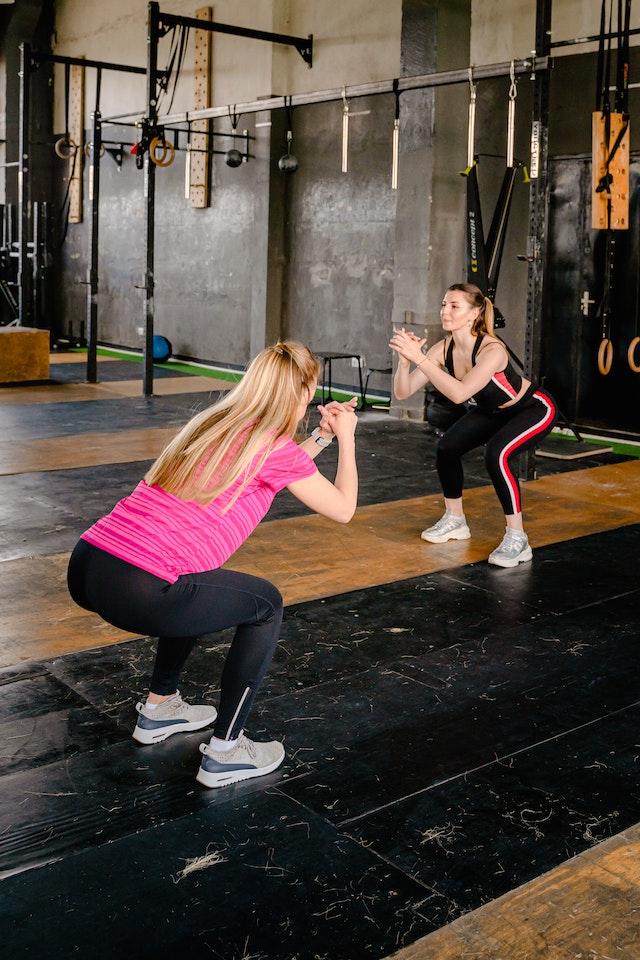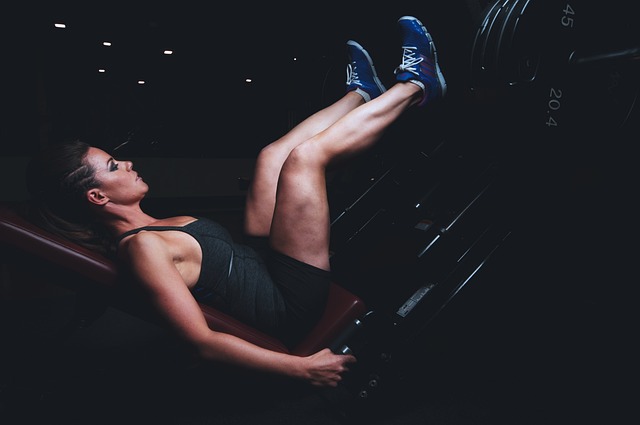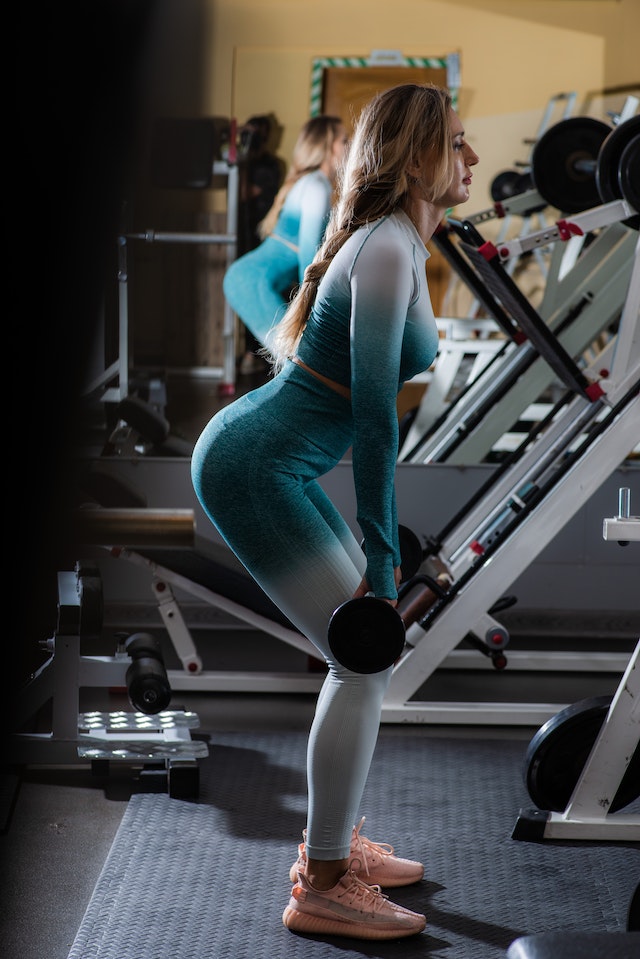
5 Easy Leg Exercises for Busy Women
In the modern world that we are living in, finding time for exercise can be a challenge, especially for busy women juggling multiple responsibilities. However, neglecting your fitness can have detrimental effects on your overall health and well-being.
The good news is that you don’t need hours in the gym to strengthen and tone your legs. In this blog, we will explore the advantages of leg workouts for busy women and provide a comprehensive guide to five easy and effective leg exercises.
Whether you have limited time or space, these exercises can be tailored to fit your schedule and help you achieve your fitness goals. Let’s start the journey to strengthen your legs while managing your other responsibilities.
Benefits of Leg Workouts for Busy Women
When it comes to leg workouts, the benefits extend far beyond aesthetics. Engaging in regular leg exercises can have a positive impact on your overall well-being. Here are some key advantages:
a) Increased Strength:
Leg workouts target major muscle groups, including the quadriceps, hamstrings, calves, and glutes. Strengthening these muscles can improve your overall strength and stability, making everyday tasks easier.
b) Toned and Sculpted Legs:
By incorporating leg exercises into your routine, you can tone and shape your legs, giving them a more defined and sculpted appearance.
c) Improved Balance and Stability:
Strong leg muscles contribute to better balance and stability, reducing the risk of falls and injuries, especially as you age.
d) Enhanced Metabolism:
Leg workouts can boost your metabolism, helping you burn calories more efficiently and maintain healthy body weight.
e) Increased Functional Fitness:
Strong legs are essential for performing daily activities, such as walking, climbing stairs, or carrying heavy loads. Regular leg workouts can enhance your functional fitness and make these activities easier and more enjoyable.
Basic Understanding of Leg Anatomy
Before diving into specific leg exercises, it’s important to have a basic understanding of leg anatomy. The legs consist of several key muscle groups and each muscle group plays a unique role in leg movement and stability.
The main leg muscles include:
Quadriceps: Located at the front of your thighs, the quadriceps are responsible for extending the knee and straightening the leg.
Hamstrings: Situated at the back of your thighs, the hamstrings help in flexing the knee and bending the leg at the hip.
Glutes: The gluteal muscles, comprising the gluteus maximus, medius, and minimus, are located in the buttocks. They play a crucial role in hip extension and leg rotation.
Calves: The calf muscles, specifically the gastrocnemius and soleus, are found in the lower leg. They aid in ankle flexion and contribute to lower leg strength and stability.
While it’s tempting to focus solely on one specific leg muscle group, it’s important to target all the major leg muscles for balanced strength and functionality.
Exercises that Require Minimal Effort
Here are five exercises that will help you stay fit and active with little effort and that you can fit into your busy schedule:
Exercise 1: Squats
A. Proper form and technique
To perform squats correctly, start by standing with your feet shoulder-width apart, toes slightly turned out. Engage your core, maintain a straight back, and begin bending your knees, lowering your hips as if sitting back into a chair.
Keep your weight on your heels and ensure your knees do not extend past your toes. Lower yourself until your thighs are parallel to the ground, then push through your heels to return to the starting position.
B. Benefits of squats for leg strength and toning
Squats are a versatile exercise that targets multiple leg muscles simultaneously. They primarily work the quadriceps, hamstrings, and glutes, providing a comprehensive lower-body workout.
Squats not only help build strength but also contribute to improved muscle tone and definition in the legs.
C. Variations of squats
- Sumo squats: Widen your stance and point your toes outward to target the inner thighs and glutes more effectively.
- Bulgarian split squats: Elevate one foot behind you on a bench or step, while performing squats with the other leg. This variation increases the challenge and engages the glutes and quads further.
- Jump squats: Add an explosive element to squats by jumping explosively from the squatting position, then land softly and immediately lower into another squat. Jump squats enhance leg power and cardiovascular fitness.
Exercise 2: Lunges
A. Different lunge variations for targeting various leg muscles
Lunges are excellent for targeting specific leg muscles and improving overall leg strength. Here are some variations to add variety and target different leg muscles:
- Forward lunges: Take a step forward with one leg, lowering your body until both knees are bent at 90-degree angles. This exercise primarily targets the quadriceps and glutes.
- Reverse lunges: Instead of stepping forward, take a step backward and lower your body into a lunge. Reverse lunges place more emphasis on the hamstrings and glutes.
- Walking lunges: Perform alternating lunges by taking continuous steps forward. This variation engages the entire leg, providing an effective workout for multiple muscle groups.
B. Step-by-step instructions for performing lunges correctly
To perform lunges correctly, start by standing with your feet hip-width apart. Take a step forward or backward, depending on the variation you choose.
Lower your body by bending both knees, ensuring your front knee stays directly above your ankle. Keep your torso upright and core engaged throughout the movement.
Push through your front heel to return to the starting position and repeat with the opposite leg.
C. Benefits of lunges for leg stability and flexibility
Lunges are highly beneficial for leg stability, as they engage the muscles responsible for balance and coordination.
Additionally, lunges promote leg flexibility, contributing to improved joint mobility and overall range of motion.
Exercise 3: Deadlifts
A. Proper deadlift form and technique
Deadlifts are a compound exercise that primarily targets the hamstrings, glutes, and lower back. Follow these steps to perform deadlifts with proper form and technique:
- Stand with your feet hip-width apart and place a barbell or dumbbell in front of you.
- Bend your knees slightly and hinge forward from your hips, maintaining a neutral spine and flat back.
- Grasp the barbell or dumbbells with an overhand grip, hands shoulder-width apart.
- Engage your core and lift the weight by extending your hips and straightening your knees. Maintain a controlled movement, avoiding any jerking or rounding of the back.
- Lower the weight back down to the starting position with control, ensuring your back remains straight throughout the movement.
B. Different deadlift variations
- Romanian deadlifts: Romanian deadlifts are performed with a slight knee bend and a focus on hinging at the hips. This variation places greater emphasis on the hamstrings and glutes.
- Single-leg deadlifts: Stand on one leg while performing the deadlift motion with a dumbbell or kettlebell in the opposite hand. This variation challenges balance and stability while engaging the entire leg.
C. Safety precautions when performing deadlifts
Deadlifts are a demanding exercise, so it’s important to prioritize safety. Maintain proper form, start with lighter weights to ensure correct technique, and gradually increase the load as your strength and confidence improve.
If you’re new to deadlifts or have any existing back or joint issues, consult a fitness professional for guidance.
D. Muscles targeted during deadlifts
Deadlifts primarily target the hamstrings, glutes, and lower back. However, they also engage the quadriceps, calves, and core muscles, making them a comprehensive full-body exercise.
VI. Exercise 4: Leg Press
A. How to use the leg press machine effectively
The leg press machine is a popular choice for targeting the lower body. Follow these steps to use the leg press machine effectively:
- Adjust the seat position so that your feet can comfortably push against the footplate.
- Place your feet shoulder-width apart on the footplate, with your knees aligned with your toes.
- Unlock the safety handles and slowly lower the weight by bending your knees until they are at a 90-degree angle.
- Push through your heels to extend your legs and return to the starting position, ensuring a controlled movement.
B. Adjustments for different fitness levels
The leg press machine offers various adjustments to accommodate different fitness levels. If you’re a beginner, start with lighter weights and focus on mastering proper form.
As you progress, gradually increase the weight to continue challenging your muscles.
C. Muscle groups engaged during leg press
The leg press primarily targets the quadriceps, hamstrings, and glutes. However, it also engages the calves and even activates the core muscles to stabilize the body during the movement.
D. Benefits of leg press for leg strength and endurance
The leg press is an effective exercise for building leg strength and endurance. It allows you to lift heavier weights compared to other exercises, placing a significant load on the leg muscles and promoting strength development.
VII. Exercise 5: Step-ups
A. Step-up variations and progressions
Step-ups are versatile exercise that can be adapted to various fitness levels. Here are two popular variations:
- Dumbbell step-ups: Hold dumbbells in each hand while performing step-ups to add resistance and challenge the leg muscles further.
- Box jumps: Instead of using a step or bench, use a sturdy box or platform to perform explosive jumps. Box jumps improve leg power and explosiveness.
B. Proper execution of step-ups for optimal results
To perform step-ups correctly, follow these steps:
- Stand facing a step or bench with your feet hip-width apart.
- Step onto the platform with one foot, ensuring your whole foot is on the step.
- Push through your heel and lift your body up onto the step, fully extending your leg.
- Step back down with the opposite leg and repeat the movement, alternating legs.
C. Benefits of step-ups for leg power and balance
Step-ups are a functional exercise that targets the quadriceps, hamstrings, and glutes while also engaging the calves and core muscles.
They improve leg power, balance, and stability, making them beneficial for daily activities and sports performance.
Tips for Busy Women to Stay Consistent with Leg Workouts
Maintaining consistency with leg workouts can be challenging, especially for busy women. Here are some tips to help you stay on track:
Prioritize your workouts:
Make leg workouts a priority by scheduling them into your daily or weekly routine. Treat them as non-negotiable appointments with yourself.
Optimize time:
If time is limited, choose exercises that target multiple muscle groups simultaneously. Compound exercises like squats and lunges provide a comprehensive workout in less time.
Incorporate bodyweight exercises: When access to equipment is limited, focus on bodyweight exercises that can be done anywhere, such as squats, lunges, and step-ups.
Set realistic goals:
Set achievable goals that align with your schedule and fitness level. Starting with small, attainable targets will help you stay motivated and build momentum.
Find accountability:
Work out with a friend, join a fitness class, or hire a personal trainer to stay accountable and motivated. Support and encouragement from others can make a significant difference.
How to Warm Up and Cool Down Properly
Warming up and cooling down are crucial components of any workout routine. Here’s how to incorporate them effectively:
Warm-up:
Before starting your leg workout, spend 5-10 minutes performing dynamic stretches and movements to increase blood flow, loosen up the muscles, and prepare your body for exercise. Examples include leg swings, walking lunges, and high knees.
Cool-down:
After completing your leg workout, take 5-10 minutes to cool down and stretch your leg muscles. This helps reduce muscle soreness and promotes flexibility. Focus on static stretches, holding each stretch for 20-30 seconds.
Avoiding Common Mistakes and Injuries
To maximize the effectiveness of your leg workouts and prevent injuries, avoid these common mistakes:
- Poor form:
Maintain proper form throughout each exercise. Pay attention to your posture, alignment, and range of motion. Seek guidance from a qualified fitness professional if you’re unsure.
- Overtraining:
Allow your leg muscles time to rest and recover between workouts. Overtraining can lead to fatigue, muscle imbalances, and an increased risk of injury.
- Neglecting warm-up and cool-down:
Skipping warm-up exercises or neglecting proper cool-down stretches increases the risk of muscle strains and pulls. Make these components a regular part of your routine.
- Ignoring pain:
Listen to your body and stop exercising if you experience sharp or persistent pain. Consult a healthcare professional if the pain persists.
Nutrition Tips for Supporting Leg Workout Results
Proper nutrition plays a crucial role in supporting your leg workout results. Consider the following tips:
- Adequate protein intake:
Consume enough protein to support muscle recovery and growth. Include lean protein sources such as chicken, fish, tofu, and legumes in your meals.
- Balanced diet:
Ensure your diet is well-rounded, including a variety of fruits, vegetables, whole grains, and healthy fats. These provide essential nutrients to fuel your workouts and aid in recovery.
- Stay hydrated:
Drink plenty of water throughout the day, especially before, during, and after your workouts. Proper hydration is essential for optimal performance and muscle function.
- Pre- and post-workout snacks:
Fuel your workouts with a small, balanced snack containing carbohydrates and protein. After your workout, replenish your energy stores with a nutrient-rich meal or snack.
Some Frequently Asked Questions about Leg Workouts
Here are some frequently asked questions that often come to mind when thinking about leg workouts:
A. Can leg exercises make my legs bulky?
No, leg exercises alone will not make your legs bulky. Building significant muscle mass requires specific training protocols, higher resistance, and often a surplus of calories.
Leg workouts for busy women typically focus on toning, strength, and overall fitness rather than excessive muscle gain.
B. How many times a week should I do leg workouts?
The frequency of your leg workouts depends on your fitness level, recovery ability, and overall training program.
As a general guideline, aim for 2-3 leg workouts per week, allowing at least 48 hours of rest between sessions to promote recovery.
C. Are there modifications for leg exercises with knee or joint issues?
Yes, there are modifications available for leg exercises if you have knee or joint issues. Consult with a healthcare professional or a certified trainer who can provide exercises tailored to your specific needs and limitations.
D. Can deadlifts be done without weights or equipment?
Yes, deadlifts can be modified to be performed without weights or equipment. One option is to perform bodyweight deadlifts, where you focus on the movement pattern and engage your muscles without external resistance.
Another alternative is to use resistance bands to add some tension and challenge to the exercise.
E. Is the leg press machine suitable for beginners?
The leg press machine can be suitable for beginners, but it’s important to start with lighter weights and focus on proper form and technique.
Beginners should also gradually increase their weight and seek guidance from a fitness professional to ensure the correct usage of the machine.
Final Words
Incorporating leg workouts into your busy schedule is a worthwhile investment in your health and fitness. This journey towards stronger, toned, and more functional legs is just beginning.
The exercises outlined in this article provide a comprehensive lower-body workout that can be adapted to your fitness level and time constraints. Remember to prioritize proper form, warm-up and cool down adequately, and listen to your body to prevent injuries.
With consistency, patience, and a well-rounded approach, you’ll reap the benefits of stronger, toned, and more functional legs.
Let’s build a community that celebrates and inspires one another on this transformative fitness journey. So, lace up your sneakers, embrace the challenge, and start sculpting those powerful legs today!


You May Also Like

My Bar Headquarters – A Disappointing Experience
9 November 2024
Is the Lukzer Garment Rack Worth It? My Honest Review
17 May 2024


